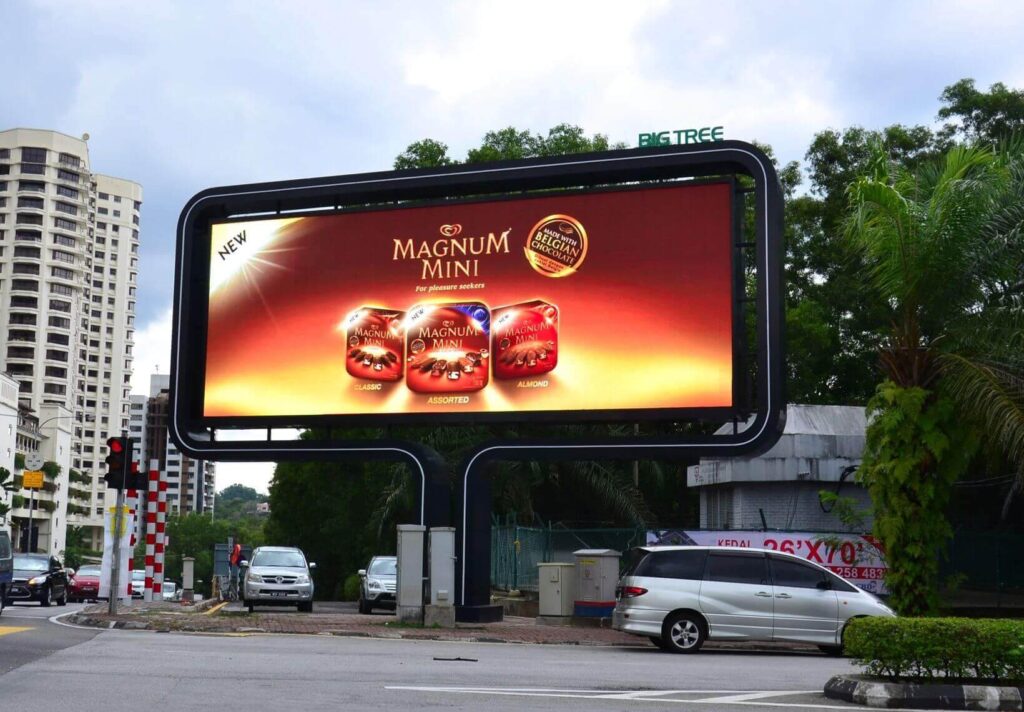Billboard advertising remains a popular method for reaching a wide audience. However, advancements in technology have introduced new ways to enhance the effectiveness of billboards. This blog post explores innovative solutions for billboard advertising, shedding light on how these advancements can revolutionize the industry.
The Evolution of Billboards

Billboards have come a long way from their traditional static forms. With the advent of digital technology, billboards have transformed into dynamic displays capable of showing multiple messages and engaging content. Digital billboards are more versatile, allowing advertisers to change their messages quickly and efficiently, which is a significant advantage over traditional static billboards.
Digital billboards offer several benefits:
- Heightened Visibility: Digital billboards are illuminated and can display vibrant images, making them more noticeable, especially at night.
- Quick Turnaround: Advertisers can upload new designs in minutes, making it easier to keep the content fresh and relevant.
- Easy to Edit: Mistakes in traditional billboards can be costly to fix, but digital billboards allow for quick and cost-effective changes.
- Multiple Messages: Digital billboards can cycle through several ads, providing more opportunities for different messages to be displayed.
Remote Monitoring
One of the significant advancements in billboard advertising is remote monitoring. This technology involves installing cameras on billboards to monitor their condition continuously. Remote monitoring ensures that billboards are always in optimal condition, allowing advertisers to address any issues promptly. This not only maintains the quality of the ads but also enhances the overall effectiveness of the campaign.
Proof of Play
Proof of play is a crucial feature for advertisers. It provides evidence that ads were displayed as scheduled. By using cameras to capture images of billboards at regular intervals, advertisers can offer clients verifiable proof that their ads were shown. This transparency builds trust with clients and ensures accountability in advertising campaigns.
Traffic Analytics
Understanding the traffic passing by a billboard is essential for measuring its effectiveness. Cameras can be used to count the number of cars passing by a billboard, providing valuable data on the reach of the ads. This information helps advertisers make informed decisions about billboard placements and optimize their campaigns for maximum impact.
Case Study: High-Resolution Cameras

A case study on the use of high-resolution cameras to monitor billboards highlights the effectiveness of this technology. High-resolution cameras can capture detailed images, allowing advertisers to detect any issues such as panels being off or damage to the billboard. This ensures that billboards are always in optimal condition, enhancing the overall effectiveness of the advertising campaign.
The Impact of Digital Billboards
Digital billboards have revolutionized the advertising industry by offering several advantages over traditional billboards. They are highly customizable, allowing businesses to update and change messages instantly. This flexibility enables advertisers to run multiple different messages and test the effectiveness of their ads easily.
Digital billboards also provide a better visual experience for consumers. Ads on LED billboards produce vibrant and captivating images or videos that grab attention. Unlike traditional billboards, digital ads do not fade or get torn, ensuring that the message remains clear and impactful.
The Role of AI in Billboard Advertising

Artificial Intelligence (AI) is playing an increasingly important role in billboard advertising. AI can automate the campaign planning process by identifying the optimal formats and placements to reach the desired audience. It also facilitates the speedy analysis of available consumer data, helping build audience movement models. Additionally, AI can optimize content based on real-time performance data, increasing the effectiveness of billboard advertisements. This technology can also help businesses tailor their messaging to specific demographic groups, ultimately helping to boost sales. By harnessing the power of AI, advertisers can ensure that their billboards are strategically placed and designed to resonate with their target audience, ultimately driving impactful results.
AI can enhance programmatic Digital Out-of-Home (DOOH) advertising through hyper-localization, tailoring messages to specific geographic areas and responding in real-time to various factors such as time of day, weather, or cultural events. This level of personalization makes billboard advertising more precise and effective.
Conclusion
Innovative solutions like remote monitoring, proof of play, traffic analytics, and AI are transforming billboard advertising. By leveraging these technologies, advertisers can ensure their billboards are always in good condition, provide proof of play to clients, and understand the reach of their ads. The case study of high-resolution cameras demonstrates the effectiveness of these solutions in enhancing billboard advertising.
FAQs
1. What are the benefits of digital billboards over traditional billboards?
Digital billboards offer several advantages, including heightened visibility, quick turnaround times, ease of editing, the ability to display multiple messages, and cost-effectiveness. They also provide a better visual experience and do not suffer from issues like fading or tearing.
2. How does remote monitoring improve billboard advertising?
Remote monitoring involves using cameras to continuously monitor the condition of billboards. This ensures that any issues can be addressed promptly, maintaining the quality of the ads and enhancing the overall effectiveness of the campaign.
3. What is proof of play in billboard advertising?
Proof of play provides evidence that ads were displayed as scheduled. Cameras capture images of billboards at regular intervals, offering verifiable proof to clients that their ads were shown, which builds trust and ensures accountability.
4. How do traffic analytics help in billboard advertising?
Traffic analytics involve using cameras to count the number of cars passing by a billboard. This data helps advertisers understand the reach of their ads and make informed decisions about billboard placements, optimizing their campaigns for maximum impact.
5. How is AI used in billboard advertising?
AI automates the campaign planning process by identifying optimal formats and placements to reach the desired audience. It also analyzes consumer data to build audience movement models and enhances programmatic DOOH advertising through hyper-localization, making billboard advertising more precise and effective.
6. Why are high-resolution cameras important for billboard monitoring?
High-resolution cameras can capture detailed images, allowing advertisers to detect any issues such as panels being off or damage to the billboard. This ensures that billboards are always in optimal condition, enhancing the overall effectiveness of the advertising campaign.
